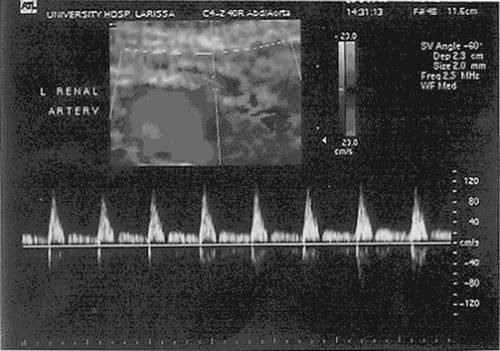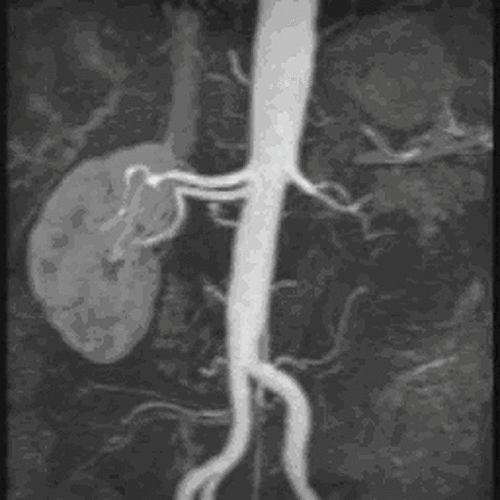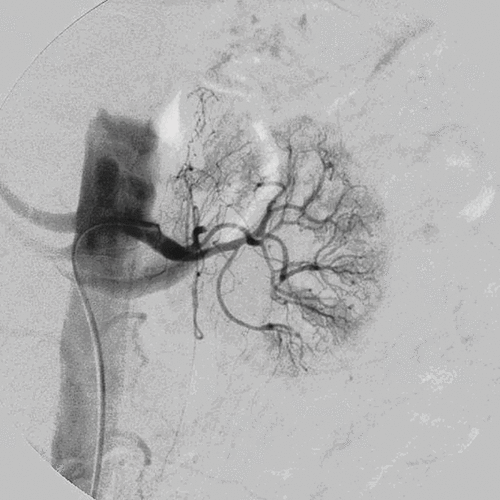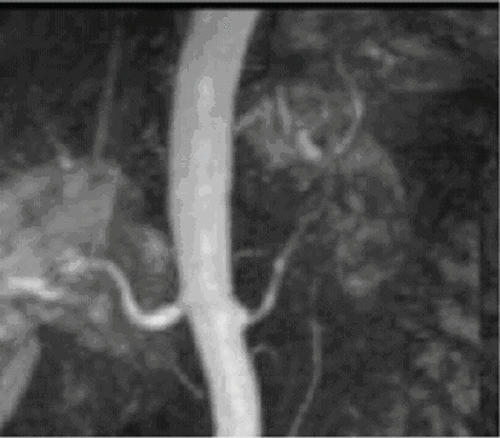Figures & data
Table 1 Distribution of findings among different methods
Figure 3. Transverse color Doppler US image. The peak systolic velocity is below 100cm/sec, which is considered normal.

Table 2 Imaging findings of US, CTA, MRA, and DSA
Table 3 Distribution of true positive findings related to mild and severe stenosis among different methods
Table 4 Results of diagnostic efficacy of all three methodscompared with DSA



